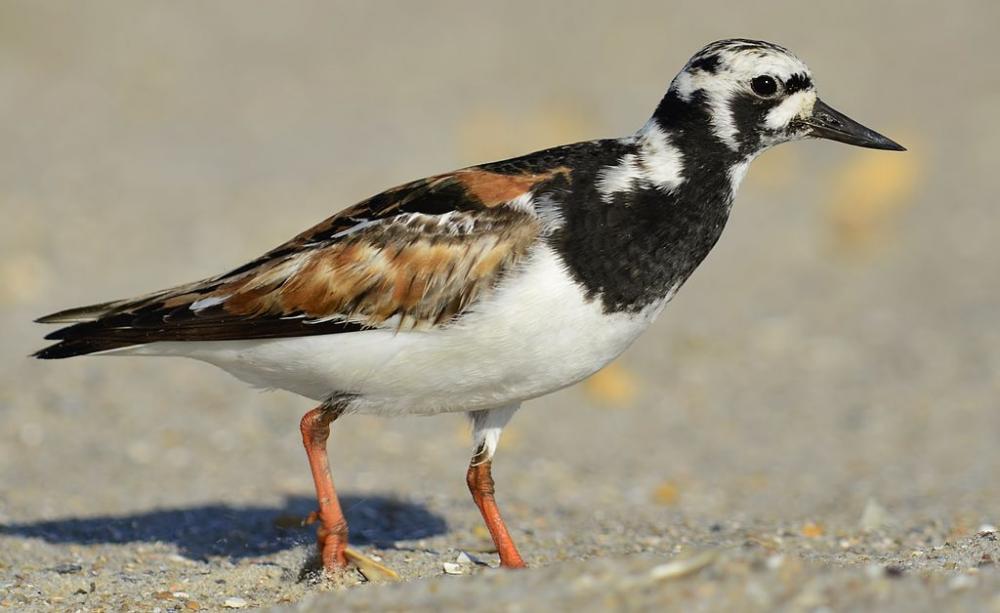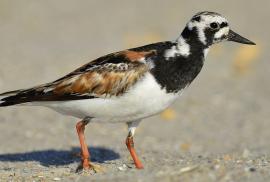Guide to Boreal Birds
Overview
In their nesting territories neighboring turnstones display head to head, the harlequin pattern of the face and black and white fanned tail serving as colorful banners. Turnstones are named for their method of feeding, in which they walk along the beach, deftly overturning small stones and pebbles and seizing the animals hiding underneath. They also dig holes in the sand, often larger than themselves, in pursuit of burrowing crustaceans. Although Ruddy Turnstones are usually encountered in small groups, they are very abundant; during the winter they scatter over a huge area, regularly occurring as far south as Australia, New Zealand, southern Africa, and South America, as well as on remote islands in the South Pacific, where they sometimes prey on nesting terns' eggs.
Description
8-10" (20-25 cm). A stocky shorebird with orange legs. Upperparts mainly rusty red in summer, brown in winter; underparts white. Face and breast have conspicuous black markings, duller but still visible in winter. Bold pattern of black and white visible in flight.
Voice
A metallic but musical netticut or kek-kek.
Nesting
Breeds on coastal tundra; winters on rocky, pebbly, and sandy coasts and beaches.
Habitat
Breeds on coastal tundra; winters on rocky, pebbly, and sandy coasts and beaches.
Range/Migration
Breeds in northwestern Alaska and islands of Canadian Arctic. Winters on coasts from Oregon and Connecticut southward and along Gulf. Also in Eurasia.



